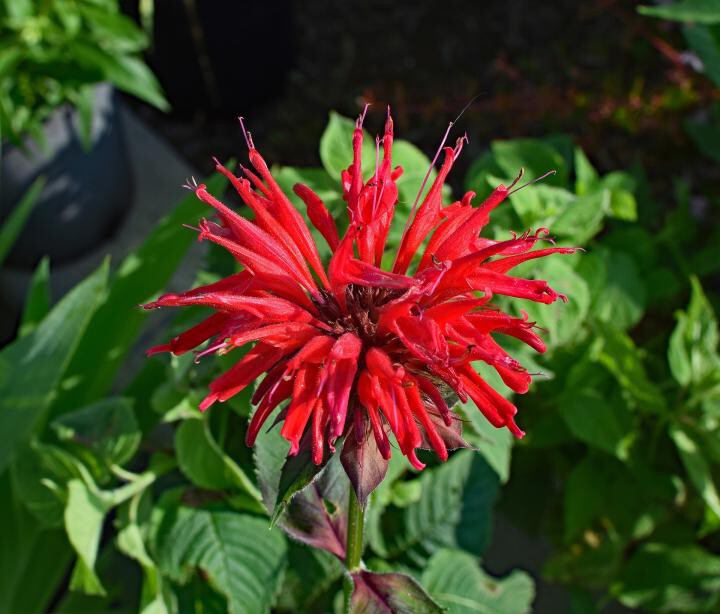A perennial favorite native to North America, bee balm (also called wild bergamot) is beloved in flower beds for its beautiful blooms of red, pink, purple or white—not to mention the fragrant foliage. Here’s how to plant and grow bee balm in your garden!
A perennial favorite native to North America, bee balm (also called wild bergamot) is beloved in flower beds for its beautiful blooms of red, pink, purple or white—not to mention the fragrant foliage. Here’s how to plant and grow bee balm in your garden!
Bee balm is a great addition to a pollinator garden. The flowers attract hummingbirds, butterflies, and bees; and the seed heads will attract birds in the fall and winter.
By The Editors
Growing Bee Balm in the Garden
Bee Balm in the Garden
Pixabay
SHARE: Facebook Twitter Pinterest Email PrintFriendly
A perennial favorite native to North America, bee balm (also called wild bergamot) is beloved in flower beds for its beautiful blooms of red, pink, purple or white—not to mention the fragrant foliage. Here’s how to plant and grow bee balm in your garden!
Bee balm is a great addition to a pollinator garden. The flowers attract hummingbirds, butterflies, and bees; and the seed heads will attract birds in the fall and winter.
PLANTING
HOW TO PLANT BEE BALM
Bee balm can be planted in the spring or in the fall.
Bee balm thrives in full sunshine. It can be grown in partial sun, but it won’t bloom as happily as it does in full sun.
Given its height (2-4 feet), bee balm makes for an excellent background plant in a pollinator garden.
Space plants 18-24 inches apart in rich, well-draining soil.
Bee balm needs good air circulation, otherwise it can develop powdery mildew on its leaves.
Water thoroughly at the time of planting.

CARE
HOW TO GROW BEE BALM
Keep soil evenly moist through the growing season.
Add mulch around the plants to preserve the moisture in the soil and control weeds.
Deadhead faded blooms to encourage the plant to re-bloom in late summer.
After the first frost in the fall, cut stems back to about 2 inches above the soil. (See local frost dates.)
Divide bee balm every 2 to 3 years to ensure its vigor. In the spring make small divisions of the newer roots of established plants and replant.

PESTS/DISEASES
Powdery mildew: Powdery mildew commonly occurs on the foliage of bee balm if humidity is too high. Reduce watering if this is the case.
RECOMMENDED VARIETIES
Monarda didyma is bright red and grows 3 to 4 feet tall.
M. fistulosa produces lavender-pink blooms in late summer.
M. pringlei grows 18 inches tall and is immune to powdery mildew. ‘Petite Wonder’ and ‘Petite Delight’ are pink varieties.
Other powdery mildew resistant bee balm varieties include ‘Marshall’s Delight’ (bright pink), ‘Jacob Cline’ (deep red), and ‘Raspberry Wine’ (dark red).
WIT & WISDOM
Native Americans and early colonists used bee balm leaves and flowers to make a variety of medicinal salves and drinks.
Bee balm is a member of the mint family (Lamiaceae). Its foliage has a strong aroma and is sometimes used in herbal teas, salads, and as garnishes. The flowers are also edible.
Despite being called “wild bergamot,” bee balm is not used in “bergamot” tea (a.k.a. Earl Grey tea). The tea is made with oils extracted from the rind of the bergamot orange, a citrus fruit.